 Shhh
ShhhDuring a recent online event, I talked with the students in a Feldenkrais class about the voice announcement that plays each time a Zoom meeting recording starts or stops. I shared how this feature, while useful for privacy, can be unnerving and redundant. It wasn’t just the redundancy that bothered me; something about the speaker’s tone of voice irked me every time, a sentiment I believe you, dear reader, may well share.
Read More…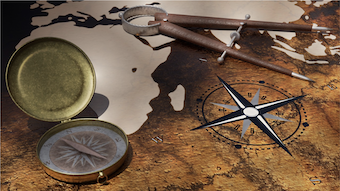 A novel paradigm
A novel paradigmWhen Rudyard Kipling was still right that East and West were inviolably separate and distinct, long before yoga became known throughout the West and fusion cuisine had become famous, Moshe Feldenkrais stood at the crossroads. Feldenkrais’ academic and professional training as an engineer instilled in him the quintessentially occidental perspective of the clockwork universe of classical mechanics and cause-and-effect reasoning. Years of practicing and teaching judo steeped him in the systemic and often arcane ways of the Judo master.
Read More…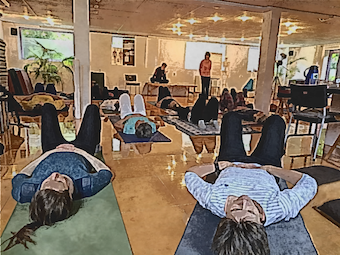 Genuine progress
Genuine progressAfter nearly 50 years of Feldenkrais teacher training, a different kind of program appeared a few years ago. Instead of preparing participants to teach both aspects of the method—the individual table lessons, known as Functional Integration, and collective floor classes, called Awareness Through Movement (ATM)—these programs prepare people to teach the group modality exclusively.
Read More…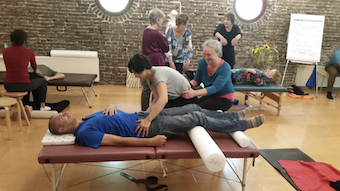 On becoming a Feldenkrais Teacher
On becoming a Feldenkrais TeacherOver nearly three decades of training people to teach the method he pioneered, Moshe Feldenkrais tried different lengths, varying formats, and educational plans. Each one was a unique experiment.
Studying Feldenkrais’ approaches, my colleagues and I sought to integrate the best aspects of each into our teacher training programs. Over the years, we gradually created a curriculum that we honed and refined, incorporating the most effective features and reworking those that needed improvement. We were guided by feedback from the participants and our commitment to prepare trainees to successfully practice Moshe’s methodology upon graduation.
Read More…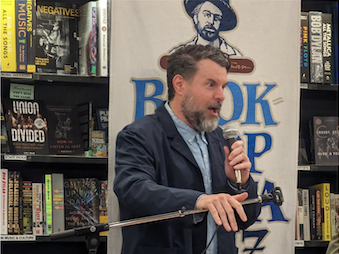 The language of connecting
The language of connectingOne evening a couple of weeks ago, I went to Bookshop Santa Cruz to hear Charles Duhigg talk about his latest publication, Supercommunicators. I was a bit thrown off by this Pulitzer Prize-winning reporter and best-selling author’s informal, interactive style until I realized he wasn’t just presenting the information in the book. Duhigg embodied ideas and brought to life the language of connection he describes and advocates for in the book.
Read More…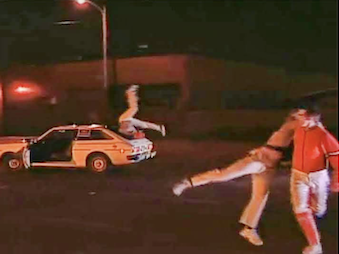 Aikido with a car
Aikido with a carI met Jess Curtis in the early days of the West Coast contact dance scene. Jess, a founding member of Contraband, a groundbreaking SF Bay Area dance and performance art troupe for the 1980s and ‘90s, and pioneering artist and activist, passed away last week.
Read More…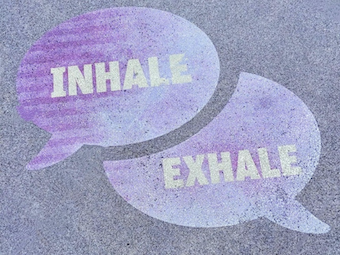 Feldenkraisian breathwork
Feldenkraisian breathworkIn 1973, Moshe Feldenkrais started a month-long training on teaching Awareness Through Movement in Berkeley, California, by teaching a version of “See-saw breathing.” Asking the participants to explore the many means by which they can get air into and out of their lungs, Feldenkrais challenges the notion that there is only one correct way to breathe.
As far as I know, this 1973 program was the only time Dr. Feldenkrais commenced any course by focusing on respiration. By making breathing the starting point, he laid the groundwork for exploring breathing throughout the rest of the program.
Read More…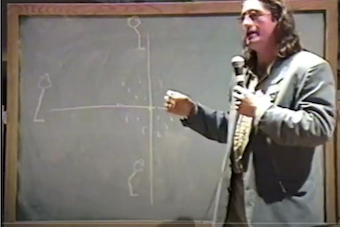 Why Robots Fall Down
Why Robots Fall DownIn 1993, I delivered the keynote address at Cybernetics in the Art of Learning, the American Society for Cybernetics annual conference in Philadelphia. The talk, titled Why Robots Fall Down, explored the link between cybernetics and human movement coordination, which was initially highlighted in Norbert Wiener’s Cybernetics in 1948.
Read More… #floortime
#floortimeMost Feldenkrais classes start with the teacher asking students to lie on the floor and tune into their physical sensations.
This ritual invites you to shift your attention from whatever you were busy doing to noticing your physical experience in the present moment. You begin to sense the rhythm of your breath, notice the position of your trunk and limbs, and feel your contact with the floor.
Read More… Neuroplasticity gets real
Neuroplasticity gets realThe Let’s Get Real Movement Festival focuses on the practical tools the Feldenkrais Method provides for improving your life by harnessing your brain’s ability to change. Organized by Australian powerhouse, Angela MacMillian, who graduated from the teacher training program Alan Questel and I directed in Adelaide
Read More…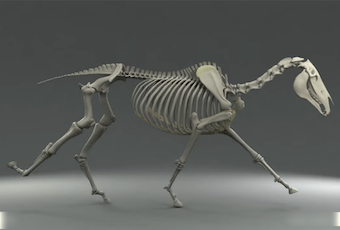 Seeing what’s missing
Seeing what’s missingHave you ever watched an animation of a horse in motion?
At the beginning of this video, you see an equine skeleton’s limbs moving sequentially. Sections of the spine — between the head and neck at the top and in the tail at the other end — ripple in a wavelike fashion. As you watch, muscle and soft tissue layers appear, followed by the skin, and eventually, the tail and mane materialize.
Read More…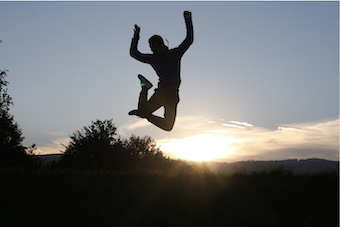 Leap of Faith
Leap of FaithBefore becoming a famous choreographer, when he and other black dancers were barred from ballet companies, Louis Johnson made a stunningly soulful short film. The first part showcases a joyous troupe of African American dancers performing on a New York rooftop; the second section is a more experimental film that superimposes evocative images on Johnson’s expressive solo.
Read More… Pass it on
Pass it onEarly Saturday, I met with a Portuguese Feldenkrais colleague on FB Messenger. He wanted guidance on working with a post-stroke student. He caught me up on their Functional Integration sessions, letting me know what worked and what didn’t. I pointed out where he’d done well, asked questions to fill in the picture, and, having gotten a sense of what he might have missed, discussed other tactics and suggested a few ways to proceed.
Read More… Full spectrum Feldenkrais
Full spectrum FeldenkraisFeaturing an international roster of teachers along with movies and music, the five-day 2024 Festival starts on Tuesday, 26 February. I am honored to be part of this innovative program again. This year, I will be teaching a mini-workshop this year on Saturday morning, March 2nd, from 10:00 AM to 12:30 PM US Eastern time.
Read More… It’s not magic
It’s not magicThe first rule of magicians the world over is simple, “Never tell the secret.”
A style of teaching Feldenkrais lessons seems to follow the same mandate. It is as if any mention of how a lesson works or what it has to teach about how our human frame is built for moving well would ruin your experience or reduce — or perhaps even eradicate — its effectiveness.
Read More… Brain-Body Interaction
Brain-Body InteractionIf you’re interested in cognitive neuroscience and physiology and you’re going to be in Paris next month, you might be interested in the upcoming Brain-Body Interactions: Cognition conference.
On the 5th & 6th of March, the conference features talks, given in English, about current interdisciplinary research in gut-brain interactions, pain, placebo effects, and consciousness. On the 7th, the presentations will incorporate movement-based practices.
Read More… Life and breath
Life and breathIf you’re curious how Moshe’s method addresses, works with, and transforms the breath, I invite you to join me for an informative, no-cost 90-minute webinar. Since this presentation is also part of the lead-up to the new PRO-Feldenkrais International Teacher Training NL, I will also discuss the role of breath in the training process and how future teachers learn to work with respiration.
Read More…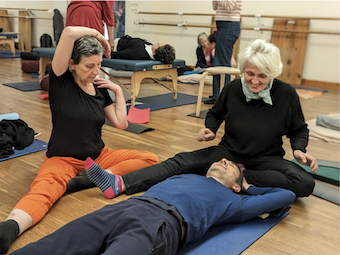 Unlocking unconscious holding
Unlocking unconscious holdingI’m thrilled to be back in the rhythm of things, immersed in doing what I love: practicing Moshe’s method, preparing future teachers, and empowering colleagues to soar in their practices.
Though I’m not back to my pre-pandemic jet-set schedule — and don’t plan to return to it — I was honored to present the postgraduate Unlocking the Spinal Engine program live and in person in Florence, Munich, and Paris this year. Reconnecting with long-missed faces, meeting others I’d only known online, and welcoming a cadre of passionate, dedicated colleagues was a joy. It’s a particular delight to bring the same curriculum to life in different places, tailor it to meet each group’s needs, and find out what the participants and the material have to teach me.
Read More…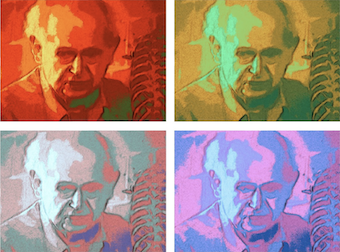 Not the same way all the time
Not the same way all the timeThirty-seven minutes and 27 seconds.
Thirty-seven minutes and 27 seconds into the 25th session of his 1972 course, Moshe Feldenkrais utters, “The teaching shouldn’t be done all the time in the same way.”
The reason I know the precise moment he made this declaration is because those words I had to replay the audio recording several times to ensure I heard him correctly. I wanted to make sure I’d heard him correctly. I had never read or heard him offer this advice elsewhere, let alone state it in such a plain-spoken, emphatic manner.
Read More…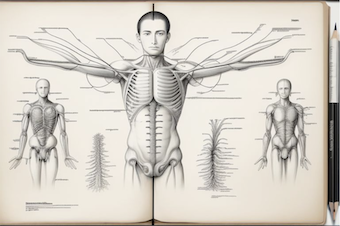 The extraordinary nature of the nervous tissues
The extraordinary nature of the nervous tissuesThe other day, when I spoke with my pal and Feldenkrais colleague, Becci Parsons, she told me about attending The Nerve Tour in Seattle. This workshop, she explained, had fundamentally altered her understanding of the nervous system, deepening her practice in ways she hadn’t imagined.
Read More… Argggh!
Argggh!Yesterday, I wrote about What It Takes to Become a Feldenkrais Teacher, the webinar I’ll present this coming Sunday, 3 December 2023, at 8:00 PM European time.
Almost immediately after publishing that blog, I heard back from quite a few frustrated folks. They encountered one or more problems when they tried to sign up. In case you ran into any of the same difficulties and in the hope that you’ll be able to join me on Sunday, I thought it best to address the issues here, one at a time.
Read More…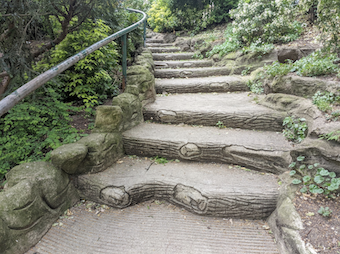 What it takes
What it takesDuring his lifetime, Moshe Feldenkrais experimented with different approaches to answering the question, “What does it take to become a Feldenkrais teacher?”
Dr. Feldenkrais’ first training program, held in Tel Aviv, lasted three years, met for a couple of hours every day of the week over three years, and focused entirely on individual Functional Integration lessons. Then he taught two summer intensives in California — one in Big Sur, at the Esalen Institute, and the other in Berkeley, in the early 1970s, which were exclusively about giving group Awareness Through Movement classes.
Read More…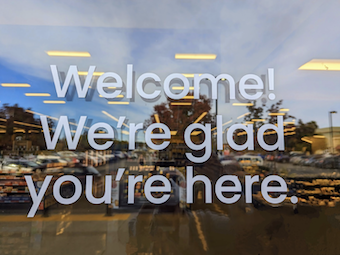 Gratitude
GratitudeIn these trying times, at home and abroad, on a whitewashed US holiday fraught with contradictions, I am spending the day with members of both of my families, the one I was born into and the one I chose. We are gathering from near and far for a meal featuring classic ingredients prepared in non-traditional dishes.
Thanks to their support, guidance, and affection, I wouldn’t have the fortitude or courage to have made it today. I am so grateful.
Read More…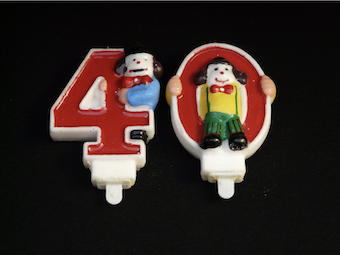 The big four-oh
The big four-ohSoon after I graduated from the Amherst Feldenkrais teacher training in 1983, I established Mind in Motion as a business. I chose the name because I appreciated and embraced all the meanings I found in those three words: that human movement is not simply mechanical; how action implies intention — and with it, sensation, feedback, and a systemic orientation; what we call “mind” is not static, it is, by its very nature, dynamic; and that meaningful change can be brought about by mindful motion.
Read More…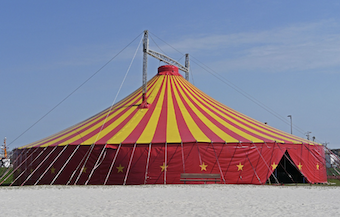 A way forward
A way forwardFor three decades, I have overseen Feldenkrais teacher training programs in the United States and Europe, serving as both educational director and administrator. As the director, I designed the curriculum, managed faculty, and supported trainees, while as the administrator, I handled advertising, logistics, finances, and operations.
Read More…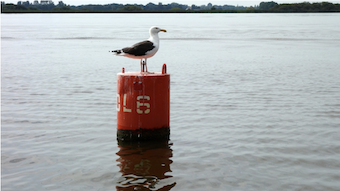 Buoyancy
BuoyancyOne aspect of email I greatly appreciate is how it makes it easy for students to let me know about their experiences during and after a private lesson or group class. The feedback is immediate and often extraordinarily intimate. For instance, here is what someone just wrote to let me know how she felt after her recent hands-on Feldenkrais session
Read More… Oil can
Oil canA couple of years after graduating from the Amherst Feldenkrais Teacher Training program, I landed my first gig working as a Feldenkrais Teacher in a physical therapy clinic.
The two brothers who ran the place, Rod and Murray Fleming, gave me the opportunity to work with a diverse group of individuals. many of whom would otherwise never have heard of the method, which, after all, was mostly unknown in the mid-1980s. Over the years, I introduced Moshe’s methodology to folks of all ages and from all walks of life, helping them with a vast range of neurological and orthopedic challenges.
Read More…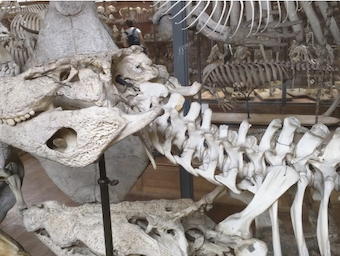 A feeling in your bones
A feeling in your bonesAfter I finished teaching Unlocking the Spinal Engine in Paris, several of my Feldenkrais colleagues in the course took me up on my invitation to visit the Gallery of Paleontology and Comparative Anatomy. Established in 1898, the museum features one of the most comprehensive collections of over 1,000 reconstructed skeletons, ranging from tiny mice to gigantic whales and dinosaurs, filling two giant halls.
Read More…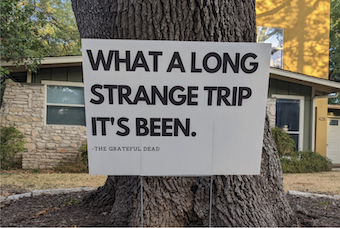 What I have learned
What I have learnedThis coming Friday morning, my Amherst training classmate and friend, Donna Blank, will present What I Have Learned in 80 Years and What I Haven’t: The Wisdom of Connection as part of the Feldenkrais Guild of North America’s 2023 annual conference. My pal and coconspirator, June LaPointe, will be interviewing and dialoguing with Donna about the cultural zeitgeist in the 1980s and now, her personal and professional development, embodied presence, and more. You can find out more about what she’ll be presenting here.
Read More… A bridge to the future
A bridge to the futureDuring August and September, the morning AY a Day peer study group worked through the recordings of the 45 Awareness Through Movement (ATM) classes that Moshe Feldenkrais taught at the Esalen Institute in 1972. This program occurred after the first teacher training program Dr. Feldenkrais conducted in Tel Aviv in the 1960s, which focused exclusively on teaching others his way of working hands-on, known as Functional Integration. The Esalen “workshop” was his initial foray into training others in teaching his classroom approach.
Read More…
